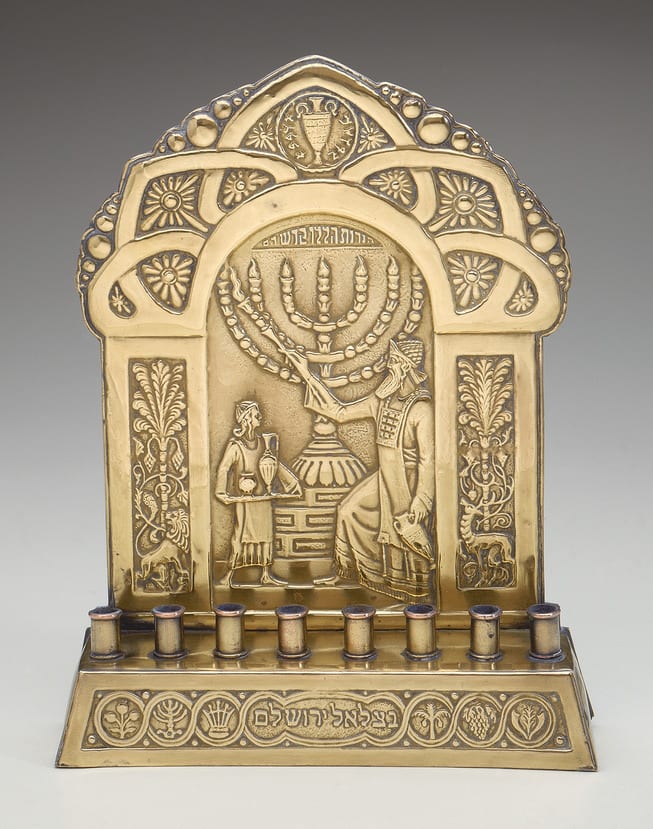
- Object Name:
- Hanukkah Lamp
- Artist/Maker:
- Ze'ev Raban
- Bio:
- b. 1890, Łódź, Russian Empire (now Poland); d. 1970, Jerusalem
- Artist/Maker:
- Sharar Cooperative
- Artist/Maker:
- Bezalel School of Arts and Crafts
- Bio:
- founded 1906, Jerusalem
- Place Made:
- Jerusalem (Israel)
- Date:
- early 1920s
- Medium:
- Copper alloy: die-stamped
- Dimensions:
- 10 3/4 × 8 1/4 × 2 3/16 in. (27.3 × 21 × 5.6 cm)
- Credit Line:
- Gift of Dr. Harry G. Friedman
- Accession Number:
- F 5455
Not On View
This lamp combines many of the complex stylistic elements and symbols that characterized the Bezalel School's aesthetic. European Art Nouveau is reflected in the interlacing arch around the central panel, and in the graceful forms of the gazelle and the date palms. The latter two are indigenous to the land of Israel, thus also conjuring up romantic images of the Middle East. Interest in biblical history is reflected in the central scene depicting the High Priest lighting the Temple menorah. Finally, reference is made to the ancient Jewish state through the use of a simulated coin at the top, suggesting the type that would have been minted by ancient Hasmonean kings as a symbol of independence from Hellenistic and Roman control. This is echoed by the symbols across the bottom of the bench, including the grape, pomegranate, and date palm, which were also taken from ancient Jewish coins.
The designer of this lamp was Ze'ev Raban, one of the major artists of the early Bezalel School from 1912 until 1929, when it closed. Raban was amazingly prolific and versatile, and he continued designing carpets, metalwork, book illustrations and posters, public relations material, even furniture and architectural ornamentation. Despite the wave of modernism that swept Israel, Raban maintained his more tradition-based style and iconography throughout his career.
The designer of this lamp was Ze'ev Raban, one of the major artists of the early Bezalel School from 1912 until 1929, when it closed. Raban was amazingly prolific and versatile, and he continued designing carpets, metalwork, book illustrations and posters, public relations material, even furniture and architectural ornamentation. Despite the wave of modernism that swept Israel, Raban maintained his more tradition-based style and iconography throughout his career.
Information may change as a result of ongoing research.